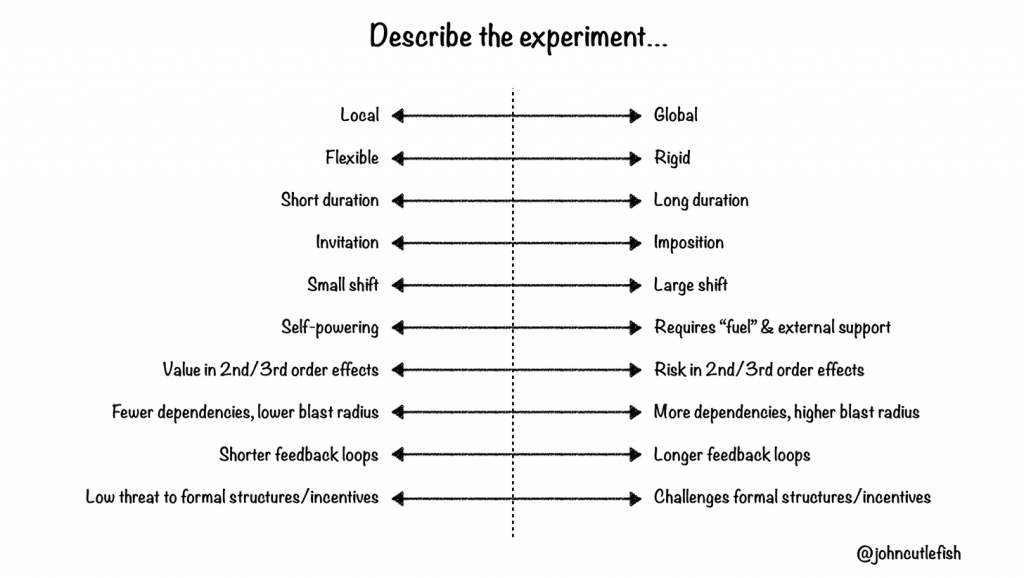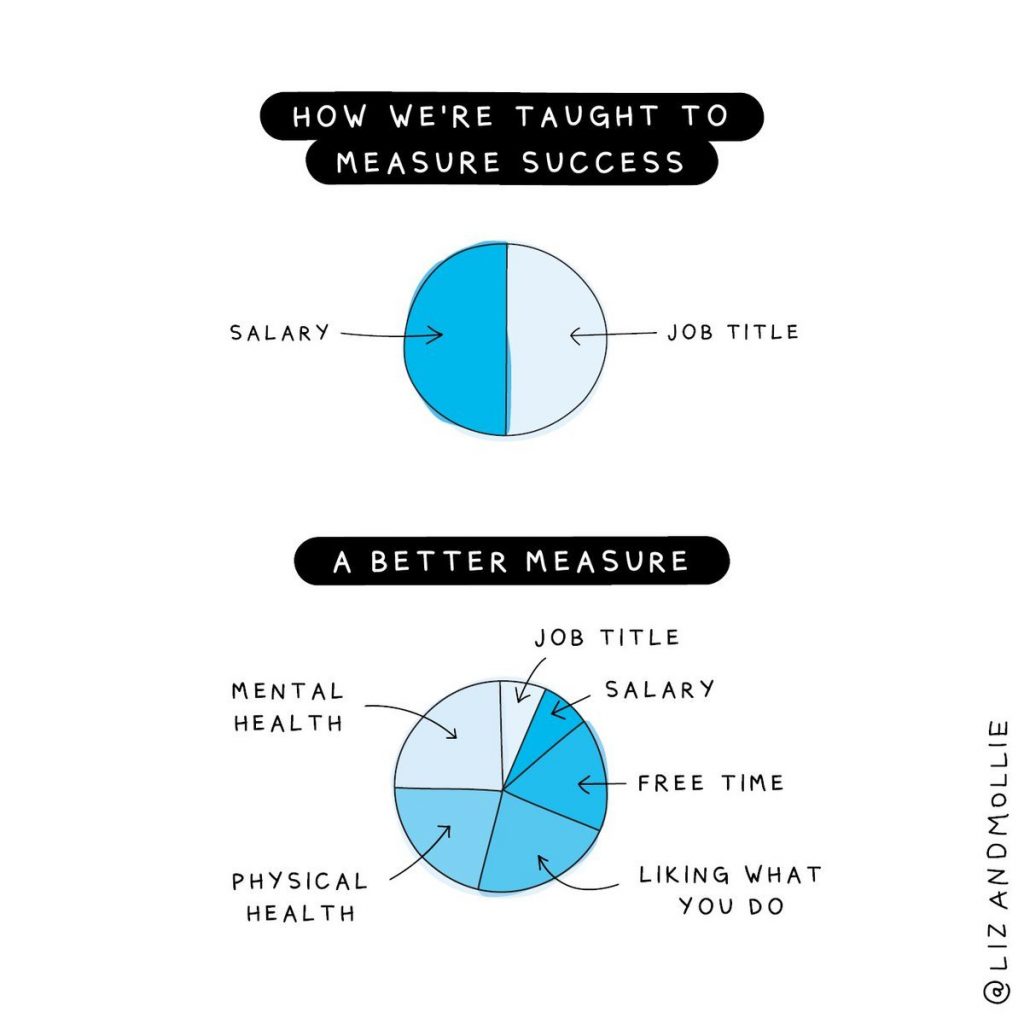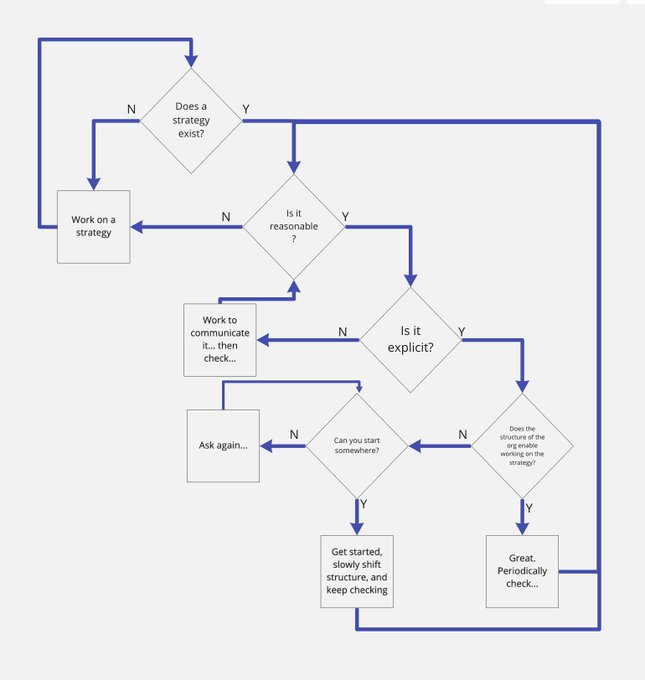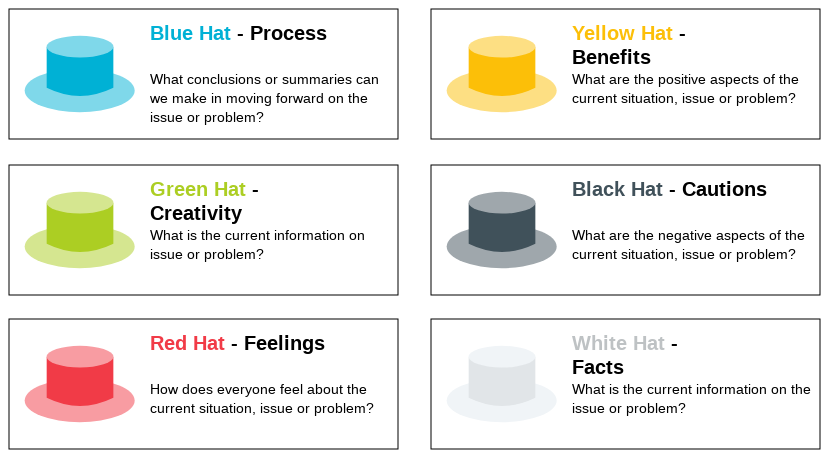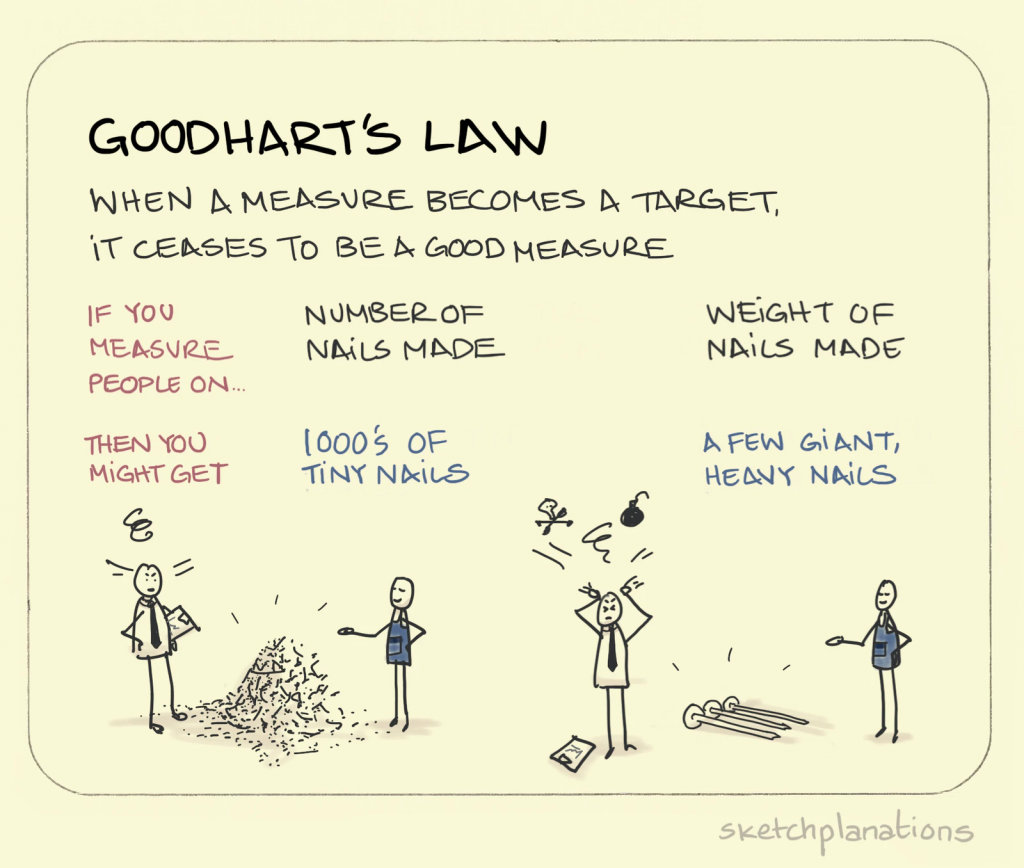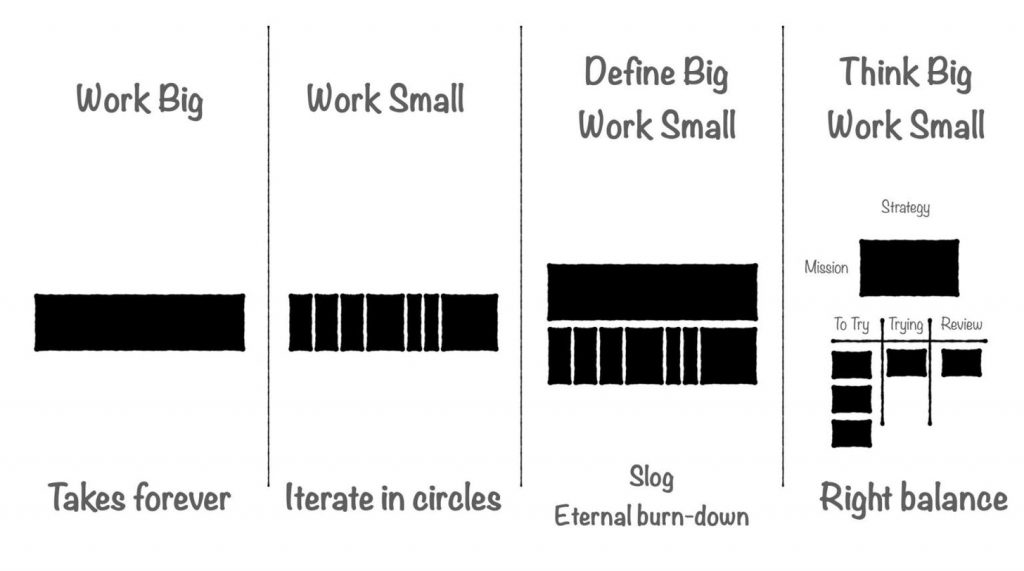
How does your team work?
Some companies only work big. Large, prescriptive projects with no incremental value delivery, no experimentation, and infrequent integration. Efforts advance at a glacial pace. Scope expands to fill the available time, and then some. And the work “on the roadmap”? That work gets bigger and bigger as well through a cycle of disappointment, fear, and planning overcompensation.
Some companies only work small. They sprint in circles. The work lacks coherence and feels scattershot. There’s a perception of progress, but looking back the team sees a lot of disjointed, reactive work. The resulting experience is incomplete and imbalanced. But management applauds the team(s) for being responsive, and the cycle continues. Plus… more features to sell!
Some companies define big, and work small. Large, prescriptive projects get broken into many small pieces. Think of this as a combination of #1 and #2. The team works small and integrates frequently, which reduces risk and accentuates progress. But there is little room to respond to learning and feedback. Design work is more set-in-stone, and less strategic. Like a big lego set, it is placing tiny pieces according to the plan. What if the finished lego set is the wrong lego set? What if 20% of the work represented 80% of the value? Then again, the team is applauded for finishing “big things”.
Finally, we have thinking big, and working small. The team rallies behind a compelling mission linked to a coherent strategy. The mission is outcome/impact oriented. The team contemplates a vision for the holistic experience but works with broad strokes. They sequence work with the riskiest assumptions first — experimenting, testing, and learning. This is not a ship-and-forget or a ship-and-maybe-in-a-year-we-come-back operation.
For items 1-3, note how incentives can hold these ways of working in place. Big prescriptive projects look bold and compelling. High velocity is intoxicating. Rapid progress on big prescriptive projects …exciting!
Thinking big, and working small is more nuanced. There’s more acceptance of uncertainty. There’s less set in stone. There’s an art to framing a mission to leave space for creativity, while also capturing the opportunity.
Start by figuring out where your company tends to work right now. If you only work big, then start working small. If you are only working small, maybe start by defining the bigger thing. If you’re working small and defining big things prescriptively, then start easing off that level of prescriptiveness focus on missions and strategies.
